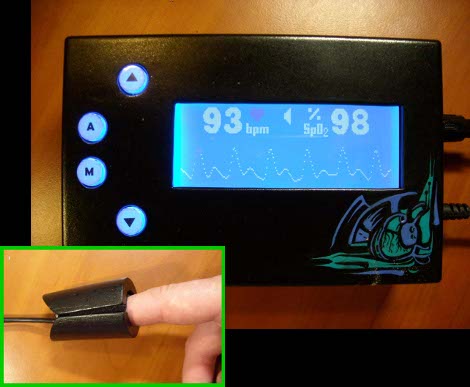This pulse oximeter turned out very nicely. It is based around a Freescale microcontroller and detects pulse as well as oxygen saturation in your blood. The sensor is made of two wood pieces and allows two wavelengths of light to be shined through your finger. A sensor picks up the light on the other side of your stubby digit and the readings are compared to calculate saturation. Check out the finished project after the break.
We saw an Arduino-based oximeter a few months ago. These kind biometric hacks are rare around here. If you’ve got a well documented project don’t forget to tell us about it.













